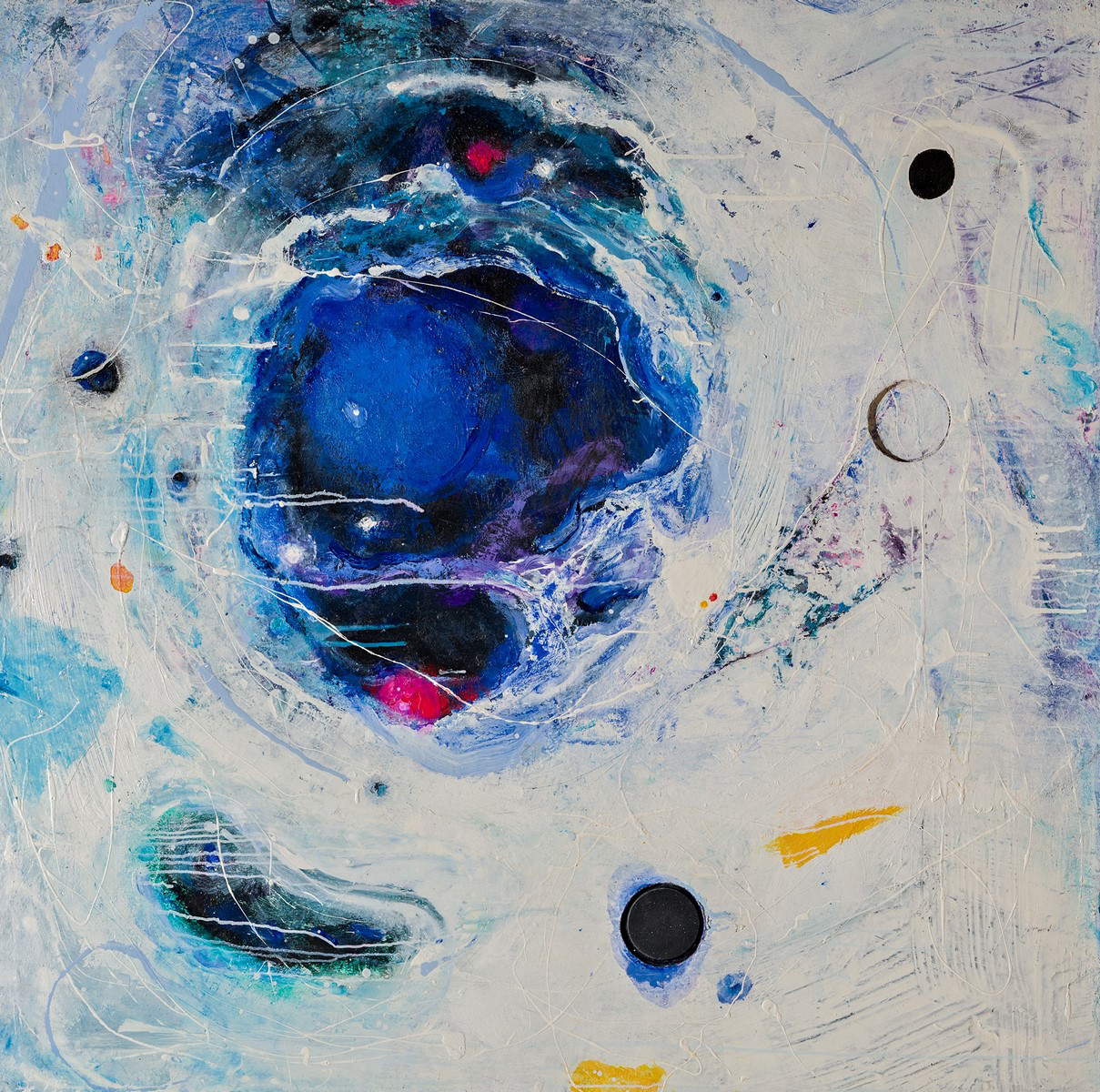The Palazzo Magnani Foundation presents a retrospective exhibition dedicated to Luciano Bertoli, for the first time in his hometown after his death in 2021, from Sept. 21 to Nov. 24, 2024, at the Palazzo da Mosto venue in Reggio Emilia. Curated by Martina Corgnati, the exhibition is titled Frattempo. The Curves of Mandelbrot in reference to the series of the same name, made starting in the 1990s and never exhibited to the public, kept by the heirs in the artist’s futuristic studio-home near Canossa Castle.
The main body of the exhibition, aimed at rediscovering the interest and originality of a research far from the artistic and commercial mainstream, consists precisely of the paintings called Frattempo. Mandelbrot’s curves, capable of highlighting the artist’s keen interest in exact sciences.
“A mysterious, textural and colorful series of works,” writes Martina Corgnati. “Dense, thick backgrounds, with a gelatinous, mobile appearance, on which amoeboid bodies float and in which bubbles are disclosed, revealing intrinsic, dark spaces from which emerge equally soft, often prominent round bodies, not real blobs but organic globules, as of worlds in formation.”
Mandelbrot’s set, named after the Polish physicist who discovered fractals, is a set of complex numbers, outlined graphically in 1984 and popularized by a cover of the well-known high popularity magazine Scientific American. Bertoli quickly sensed the aesthetic potential of this complex mathematical object, but left aside any attempt at reproduction, in favor instead of constructing a new universe of images inspired by it but with a predominantly organic and tactile matrix.
“My images,” wrote Luciano Bertoli, "are the result of pure intuition, of mathematical auscultation, invented by a visionary who loves quantum physics, visualizing what can only be intuited, imagined, that is, the origin of the universe of Niels Bohr and Max Planck’s quantum mechanics. Aesthetically, I have accentuated coloristics, vibrations, spatiality, everything that remains unexplored except by the eye-mind."
The exhibition is complemented by a rich section devoted to works from the earlier period-paintings, sculptures, graphics, drawings and assemblages-to present to the public the essential components of an experimental path in materials and techniques and always sustained by a genuine curiosity for the world of machines and technology, protagonists of the society contemporary to him and of other possible, futuristic, science-fiction civilizations.
In the 1970s and 1980s, the artist worked, in fact, on hibernating landscapes, self-generating constructions, mechanical animals, metallic eroticisms, plasticized and electric ideal cities, installations and sculptures, but also on folders of drawings and graphics characterized by technical perfection and attention to detail. The same care the artist gives to the sketches: more than sketches, real engineering projects, functional for the mechanization of his sculptures, many of them designed for the outdoors.
Combining magic and technique, fantastic spirit à la Julius Verne and rigorous attitude as an engineer, in fifty years of research Luciano Bertoli has been able to glimpse aspects of surgery and computer science, cybernetics and medicine, at the time not even conceivable, making art, as the curator concludes, “a tool to be in time, in one’s own time, as a bridge to project intuition and intelligence towards the world and the universe and its laws.”
The exhibition is accompanied by a catalog published by Silvana Editoriale with a critical text by Martina Corgnati.
Born in Reggio Emilia in 1940, Luciano Bertoli graduated from theAcademy of Fine Arts in Bologna under the guidance of Umberto Mastroianni. After the first late-informal tests of the 1960s and various pictorial experiences, he found his own way at the end of the same decade. These are ’mechanomorphic’ languages of so-called ’macchinism,’ a conceptual art that in the mid-1970s captured the interests of historians and critics, including Giuseppe Marchiori, Enrico Crispolti, Albino Galvano and Eugenio Battisti. Bertoli collaborated with massmediologist and visual poet Lamberto Pignotti in art cinema and original comic book series. In the 1980s the so-called ’eclecticism’ dominated in art in Italy, and Bertoli participated in group exhibitions with Edoardo Di Mauro and other critics. He alternated his work as a ’Formgestalter’ with that of a painter (not a sculptor, as he is often classified). In 1987-88 he invented and built sound machines that he ironically called ’virtuosines’ and, later, electronic machines with pulses of light and sound. In the late 1990s it is always the machine that dominates the scene in a new bio-technological variant. A chapter that will culminate in an anomic book entitled Slag Pad(Edizioni Umberto Allemandi, Turin, 2000). With Slag Pad Bertoli closes his account of Maldonadoian alternative experiences and ideally opens a window that floods his room with light; with humility he seeks a possible renewal. In the last phase of his painting, he senses some similarities with the quantum and relativistic theories of physics of Heisenberg and Bohr, as well as their successors, from Peter Higgs to Mandelbrot himself: in quantum fluctuations, the frenetic whirling of sub-atomic particles recalls the evolving, changing and dissolving of his work, which by changing conceptual stability becomes effectively indeterminate. Luciano Bertoli will die in Reggio Emilia in 2021.
For all information, you can visit the official website of Palazzo Magnani.
Image: Luciano Bertoli, Frattempo. The Mandelbrot Curves (1997; oil on panel, 100 x 100 cm). Photo: Carlo Vannini
 |
| An exhibition in Reggio Emilia traces the career of Luciano Bertoli |
Warning: the translation into English of the original Italian article was created using automatic tools. We undertake to review all articles, but we do not guarantee the total absence of inaccuracies in the translation due to the program. You can find the original by clicking on the ITA button. If you find any mistake,please contact us.